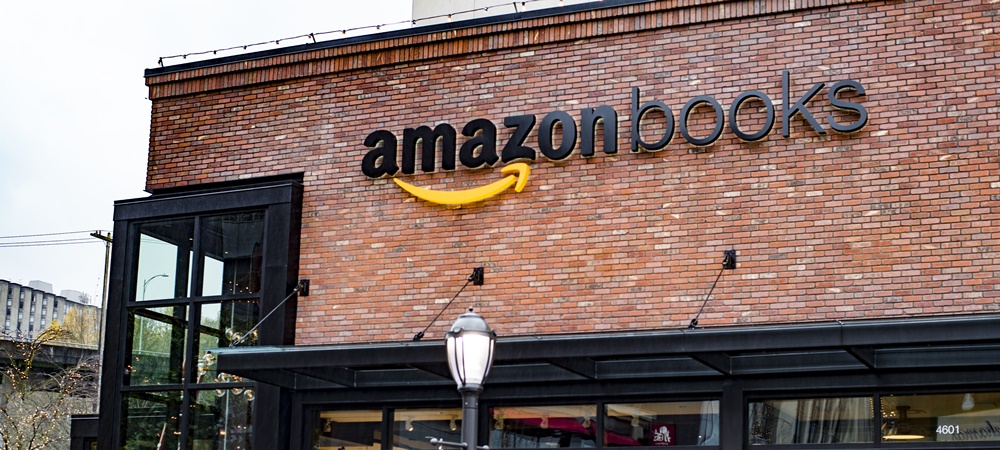With online video giant YouTube recently announcing a plan to move into bricks and mortar with the opening of its Creator Store in London, we take a look at the phenomenon of online-only players taking the leap into physical stores.
The YouTube location is attached to Google’s 11-storey King’s Cross headquarters and will provide a space for high-profile YouTubers to sell merchandise. It’s just the latest in a string of (predominantly American) online retailers including Amazon, glasses retailer Warby Parker, menswear business Bonobos and beauty company Birchbox establishing physical stores.
Internet retailing behemoth Amazon made headlines earlier this year when the brand opened a physical store in Seattle’s University Village and at a shareholder meeting in May CEO Jeff Bezos said the company will continue its bookstore expansion.
“We’re definitely going to open additional stores, how many we don’t know yet,” said Bezos. “In these early days it’s all about learning, rather than trying to earn a lot of revenue.”
This phenomenon is also present closer to home, with a report by the Commonwealth Bank released earlier this year revealing that almost one in five Australian online-only retailers are planning a bricks and mortar outlet by 2017.
Why get physical?
Most consumers today expect bricks and mortar stores to also trade online, but few expect pure play online retailers to have physical spaces. So why do successful brands like Amazon feel the need to branch out?
Jerry Macey, Commonwealth Bank national manager retail, says online players want to open physical locations to provide a tangible experience for customers and drive further online sales.
“Bricks and mortar and multi-channel retailers are doing more online as customer preferences evolve,” he explains. “At the same time, emboldened digital retailers are opening physical stores to complement and drive further online sales.”
Pippa Kulmar, senior strategist at consultancy firm Retail Oasis, agrees. “Pure play retailers are looking at getting into more ‘traditional’ retail,” says Kulmar. “A lot of it is marketing…YouTube isn’t thinking about what profit it will generate from its store, but in terms of brand awareness.
“[It] is about brand awareness and engaging with new customers with the sale to follow, as opposed to a traditional retail mentality.”
We also perhaps shouldn’t be surprised that online players would want a physical location as, contrary to commentators who claim bricks and mortar retailing is over, it is still an exciting space.
“There’s a myth that the store is dead,” says Kulmar. “The store is never going to die. We live a physical existence; we’re not sitting at our computers all day every day. Shopping fulfils a social need.”
It’s also about branding
With the physical presence of YouTube and Amazon not likely to earn anywhere near as much as their online counterparts, are these bricks and mortar ventures just marketing stunts?
“The YouTube store is definitely about marketing,” says Kulmar. “Amazon probably did it to get publicity and stay relevant—they need to stay top of mind for consumers.
“The Amazon example is interesting because everyone was quite shocked they opened a bookstore that was quite traditional. The thinking was that surely they would’ve done more to integrate the internet experience.”
Online breeds innovation
Moving from a digital to physical space is usually about experimenting, innovating and learning along the way. While many bricks and mortar retailers feel tied to traditional retail models, pure play online retailers often have more freedom (and the inclination) to try different things.
“Online-only business is where most of the innovation in retail is happening,” says Kulmar. “They’re more open to trying new things because they don’t have the legacy of traditional retail
“Online retailers generally come out of a start-up culture so they think about retail incredibly differently.”
An innovative approach to retail is certainly needed, as to compete with clicks, bricks and mortar retailers must rethink their stores as simply a space for product and instead focus on offering consumers more.
“I was in New York in January and what I found was that retailers are rethinking their store as being focused mainly on product,” says Kulmar. “The store is about an experience—what does it offer that online couldn’t?
“What’s going on with bricks and mortar retailing is that people are rethinking it because the store can’t be about product or price.”
Want the latest retail news delivered straight to your inbox? Click here to sign up to the weekly retailbiz newsletter.

